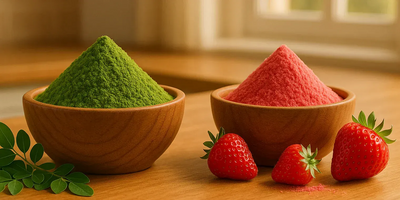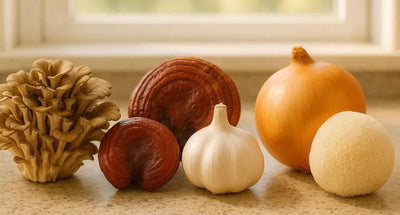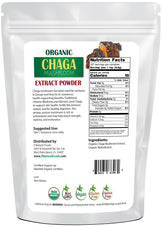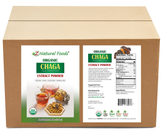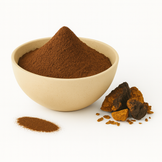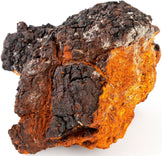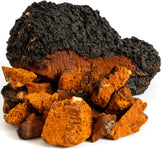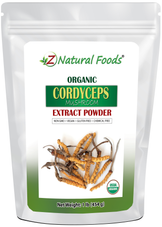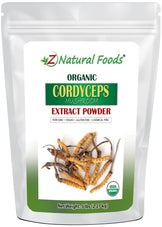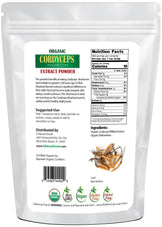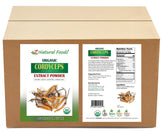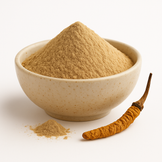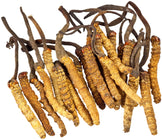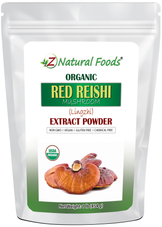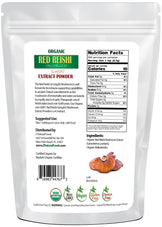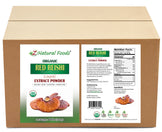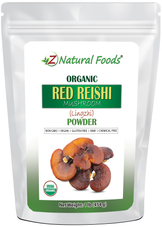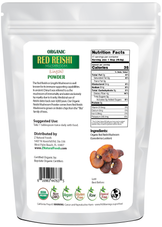Description
Description
If you have ever wondered what the real difference is between cordyceps mushroom, chaga mushroom, and red reishi mushroom, you have found the right article.
In this article, we describe the differences between these three mushrooms, the benefits of each, and what makes them unique.
What is the difference between cordyceps, chaga, and red reishi mushrooms?
Cordyceps, chaga, and red reishi all have a wonderfully rich history of usage and are revered and respected worldwide. Chaga is known for its traditional ability to preserve youthfulness. Red Reishi is known as “The Mushroom of Immortality” and may support a healthy immune system response. Cordyceps may improve tolerance to high-intensity exercise.
While medicinal fungi are often grouped into general categories like tonics, adaptogens, and nootropics, each mushroom has unique qualities and functions.
Let’s now get into the details of what makes these three wonderful mushrooms so powerful and uniquely beneficial.
Similarities and differences between cordyceps mushroom, chaga mushroom, and red reishi mushroom
All medicinal mushrooms contain a wide array of compounds and polysaccharides, allowing them to create a modulating support system to nourish and balance human physiology.
Mushrooms' long and well-documented history of traditional usage has intrigued researchers worldwide to try and “crack the code” to learn about an individual mushroom's unique qualities and attributes.
Every day we see more research and learn about their immunological, neurogenic, cardiovascular, and microbiome effects, along with a host of other nourishing qualities.
Our mission is to answer your questions and provide a thorough explanation and the critical details necessary to understand the topic.
So, today we look at the unique aspects of chaga, cordyceps, and reishi mushrooms.
Cordyceps mushrooms
Researched for its ability to support vitality and performance, strengthen the body and mind, and support a healthy stress response, this elite-level Jing tonic and superstar of the mushroom world is categorized as an actual adaptogen and revered by tonic herbalists worldwide.
Sweet in flavor and warm in temperature, cordyceps is famous for nourishing both Yin and Yang, supporting the kidneys and lungs, supporting life capacity and life force reserves, and is considered a fantastic tonifier of QI.
You won’t have to search far to see that cordyceps is regarded as one of the greats in Traditional Chinese Medicine, right next to Ginseng, Reishi, Deer Antler, and Schizandra.
Cordyceps is a treasure trove of bioactive compounds like all other medicinal mushrooms. Some of the primary ones which have been researched and thought to support cordycep's “life-supporting” effects are
- Nucleosides
- Polysaccharides
- Sterols
- Amino Acids
- Polypeptides
- Cordycepin
The article titled Chemical Ingredients of Cordyceps Militaris looked at the breakdown and concentration levels of various predominate compounds found in cordyceps. It was stated,
According to the National Library of Medicine paper titled The Chemical Constituents and Pharmacological Actions of Cordyceps Sinensis, the following statements regarding bioactive compounds found in Cordyceps were made.
Nucleosides:
- “Nucleosides, a major active component of C. Sinensis, is used as a valuable chemical marker for quality control of Cordyceps.”
- “More than ten nucleosides and their related compounds, including adenine, adenosine, inosine, cytidine, cytosine, guanine, uridine, thymidine, uracil, hypoxanthine, and guanosine, have been isolated from Cordyceps Sinensis.”
- “Almost all of the nucleotides and nucleosides in C. Sinensis can be transformed reciprocally.”
- “Furthermore, many scholars began to study its pharmacological effects and had a lot of achievements. A UPLC method for fast simultaneous determination of several nucleosides was developed this year and was also applied for the determination of the analytes in cultured Cordyceps Sinensis.”
- “Nucleosides can adjust and control the human body's physiological activities through purinergic and/or pyrimidine receptors.”
- “Therefore, the determination of nucleosides and their related compounds is extremely important for the pharmacological study and quality control of C. Sinensis and its products.
Cordycepsin:
- “Cordycepin is the most considerable adenosine analogue from some Cordyceps, which is a derivative of the nucleoside adenosine differing from the latter by the absence of oxygen in the 3′ positions of its ribose entity.”
- “Cordycepin is a category of compounds that exhibits significant therapeutic potential and has many intracellular targets, including nucleic acid, apoptosis, and cell cycle.”
- “Wang et al. investigated the effects of cordycepin in the prevention of focal cerebral ischemic/reperfusion (IR) injury and suggested that cordycepin has a neuroprotective effect in the ischemic brain, which is due to the inhibition of inflammation and increase of antioxidants activity related to lesion pathogenesis. So cordycepin could be an attractive therapeutic candidate with oral activity against I/R-associated heart diseases such as myocardial infarction.”
Adenosine
- “Adenosine which plays an important role in the biochemical process in the organism is a significant nucleoside in Cordyceps spp.”
- “The content of adenosine is much higher in cultured Cordyceps Sinensis than in the natural one.”
- “Among them, cultured C. Sinensis has a large number of adenosines, which are much higher than those in cultured C. militaris.”
- “Many other adenosine analogs such as 2′-deoxyadenosine, 2′3′-dideoxyadenosine, cordycepin triphosphate, and 3′-amino-3′-deoxyadenosine have also been found in Cordyceps Sinensis. Yang and Li introduced three methods to extract adenosine: organic solvent pressurized liquid extraction, boiling water extraction, and ambient temperature water extraction. They found that the extraction ratio of adenosine is much affected by extracting time, and natural Cordyceps Sinensis may contain some enzymes which can decompose adenosine.”
- “Also, adenosine is an energy transfer and signal transductant in cells and can still exert a wide spectrum of cytoprotection or prevent tissue damage, such as treating chronic heart failure, anti-inflammatory properties, and anticonvulsant activity.”
A double-blind, placebo-controlled study using 28 individuals examined whether acute and chronic supplementation of cordyceps improves tolerance to high-intensity exercise.
- “ One week of supplementation elicited no significant time × treatment interaction for VO2max (p=0.364), VT (p=0.514), TTE (p=0.540), RPP (p=0.134), AvgP (p=0.398), or %drop (p=0.823).”
- “After three weeks, VO2max significantly improved (p=0.042) in MR (+4.8 ml·kg−1·min−1), but not PL (+0.9 ml·kg−1·min−1). Analysis of 95% confidence intervals revealed significant improvements in TTE after 1- (+28.1 s) and three weeks (+69.8 s) in MR, but not PL, with additional improvements in VO2max (+4.8 ml·kg−1·min−1) and VT (+0.7 l·min−1) after 3-weeks.”
Therefore, it was concluded, “Acute supplementation with a cordyceps militaris containing mushroom blend may improve tolerance to high-intensity exercise; greater benefits may be elicited with consistent chronic supplementation.”
Chaga Mushroom
From Maine to Siberia, this prized fantastic fungus found growing on birch trees has been traditionally “hunted” by mushroom enthusiasts in the dead of winter when the temperature has been below 40 degrees for several weeks (but Chaga truly thrives in brutal arctic weather).
Like adaptogens, the more severe the growing conditions, the more powerful the end product. With most mushrooms, the fruiting body is present above ground, and the mycelium is not visible to the naked eye.
Chaga’s large black charcoal-like hard mass presents as a collection of mycelium called the sclerotium while the fruiting body is inside the tree. Chaga’s outer layer is tough and dark black (due to large amounts of melanin), and the inner layer is a lighter brown with a cork-like consistency.
While 20-year-old Chaga is considered to be fully mature with the greatest concentration of potent healing compounds, it can live as long as 80 years before it dies and repeats the cycle. Chaga is revered for its traditional ability to preserve youthfulness, categorized as a Qi tonic, and considered a tremendous kidney and Shen tonic.
Compared to other powerful mushrooms like Reishi, Agaricus, and phellinus linteus, researchers showed that Chaga had the most potent antioxidant activity regarding SOD and free radical scavenging abilities.
- In 2011 we learned from preliminary animal and cell culture studies that one of Chaga’s mechanisms of action is to modulate immune responses through the secretion of Th1/Th2 cytokines in immune cells. Chaga also regulates antigen-specific antibody production.
- A high molecular weight phenolic pigment known as melanin is found on the surface of Chaga. These melanins are potent antioxidants present throughout the body. Preliminary in vivo and in vitro studies show the potential for strong DNA protective effects of the melanins found in Chaga.
Because Chaga is primarily found on birch trees, it is a highly nourishing source of the pentacyclic triterpene sterol called betulinic acid, converted from betulin.
Pentacyclic triterpenoids are active phytochemicals with a wide range of potential supportive activities for liver and gut health and healthy inflammation response.
Red Reishi Mushroom
Red Reishi is known as “The Mushroom of Immortality” and has a long and well-documented history in traditional Chinese medicine. Because of its ability to potentially support a healthy aging process via nourishing what Chinese medicine calls “The Three Treasures.”
- Jing is essence primarily stored in the kidneys. Jing is one’s constitution, regulates the body’s growth and development, and works with Qi to protect the body from harmful external conditions. Poor constitution, blood loss, and excessive sexual activity can cause jing essence deficiencies.
- Qi is a life force or vital energy stored in the kidneys. Both the physical and emotional are manifested as Qi. The Qi in our body is derived from two sources. First, it is inherited from our parents, and the second is derived from essential substances like air, food, and water. Deficiencies are caused by poor nutrition and digestion, chronic stress, and constrained breathing.
- Together, Jing and Qi are believed to form the foundation for Shen.
- Shen is the emotional and spirit layer of our being that reflects the state of our nervous system. Shen lives in the heart and is said to “preside over the activities that take place in the spiritual and mental planes.” Because Shen lives in the heart, people with disturbed Shen may experience anxiety, stress, difficulty breathing, and insomnia. In such cases, the primary weakness is from the spleen, which cannot generate enough blood to nourish the heart and anchor the Shen.
Red Reishi primarily comprises complex carbohydrates called water-soluble polysaccharides, triterpenoids, proteins, and amino acids.
Thanks to modern techniques for performing tissue cultures, we know that reishi has around 16,000 genes that code for more than 200,000 compounds, and 400 are active constituents.
Red Reishi could arguably be one of the greatest tonics on earth and may support a healthy immune system response and liver function. Reishi is highly revered for promoting the growth of wisdom.
In conclusion, it is vital to understand that it is no easy task to compare different medicinal mushrooms because while they all have similar general constituents, attributes, and the ability to nourish in common, they are all unique in their own way.
Chaga, Reishi, and Cordyceps all have a wonderfully rich history of usage and are revered and respected worldwide as powerful tonics. Because of their nourishing qualities, fungi have been, and will continue to be, the focus of research for many years. Their unique attributes, unlimited potential, and untapped information are what make the fungi world so intriguing.
For more information about our mushrooms, visit these great resources:
- Turkey Tail Mushrooms: A Review of the Latest Research
- What are the three main parts of a mushroom?
- What is Maitake Mushroom used for? (+5 traditional uses)
- Which Mushroom Is Good For The Brain? (Explained)
- Most nutritious mushrooms (list of 7)
To review all of our mushroom products, go here:

